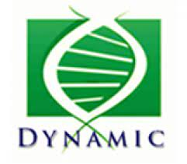Projet ANR FunDate
Dans des conditions de carence en azote, la cyanobactérie multicellulaire et diazotrophe Nostoc PCC 7120 différencie ∼10% de ses cellules en hétérocystes spécialisés dans la fixation de l’azote. La décision de s’engager de façon irréversible dans la différenciation intervient ∼13 h après son induction. Si l’initiation de ce processus est bien comprise, les mécanismes qui régissent la transition vers l’engagement et la maturation restent à identifier. L’objectif du projet Fun-Date est d’élucider la fonction des protéines HetC, HetP et PatB connues pour être nécessaires à la différenciation. PatB est un régulateur transcriptionnel, HetC un ABC- transporteur. Notre hypothèse est que le transporteur HetC module l’activité de PatB, et donc l’expression des gènes, par le transport de HetP. Des approches génétiques et biochimiques seront utilisées pour analyser les interactions entre ces trois protéines et pour mettre en évidence le rôle de ce réseau dans la formation des hétérocystes.
Under nitrogen-limiting conditions, the multicellular and diazotrophic cyanobacterium Nostoc PCC 7120 differentiate ∼10% of its cells to become specialized nitrogen-fixing heterocysts. The decision to commit into terminal differentiated cells occurs ∼13 h after the induction of differentiation. While the initiation of this process is rather well understood, the mechanisms that govern the transition to final commitment and to maturation are still unknown. In the Fun-Date project, we aim at addressing this point by elucidating the interplay between an ABC-transporter (HetC), HetP and a transcriptional regulator (PatB). Our hypothesis is that the transporter HetC modulates the activity of PatB, and therefore gene expression, through the transport of HetP which otherwise inhibits PatB. Genetic and biochemical approaches will be used to analyze the functional interactions between the three proteins, highlighting the role of this network to achieve terminal differentiation.









